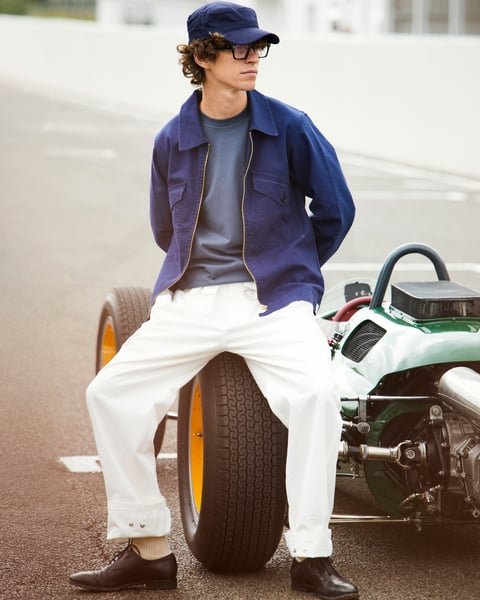The glory of the last 'proper' Aston Martin | Thank Frankel it's Friday
 Andrew Frankel
Andrew Frankel
A press release just landed on my virtual doormat informing me that it’s 30 years since Aston Martin bolted a pair of Eaton superchargers to its V8 engine and created the V8 Vantage V550, the number referring both to its power and torque outputs in bhp and lb ft respectively.

At this stage I’d usually point out how old this news makes me feel, given that I’d been in the business quite a while by the time of its introduction. But in fact and for once it doesn’t: those V-cars feel like they came from another era altogether, even though the last one didn’t rumble its way out of the Newport Pagnell gates until after the new millennium had dawned.
I know that, at the time, I failed entirely to appreciate just what Aston Martin had achieved with that car. When it came out it was just about the most powerful thing on wheels, pre-dating the McLaren F1 as it did, and matching – at least – the power of the Jaguar XJ220. It was more powerful than any street car Ferrari had ever made, and over 100PS (74kW) more gutsy than its then flagship, the 512TR. No Lamborghini could get near that power, even before Aston Martin offered a 600PS (441kW) upgrade to the motor.
It wasn’t a hard car to criticise, thanks to its clunky gearbox, substantial mass and somewhat limited chassis ability, but when it was at full chat, rear springs on full compression, nose sniffing the air, V8 howling at the moon, it really was quite something. And I am sure that even today it would feel the same way.
But really the point I’m trying to make is not so much what it did, but how extraordinary it was that it did it to begin with. It was the ultimate automotive dancing bear: it was not the quality of the dance that took your breath away, but the fact it was dancing at all.
Consider this. The classic Tadek Marek four-cam V8 motor had run for the first time in the summer of 1965 but endured such immense teething troubles, it didn’t find its way into a production car for four more years. It did so with a power output of perhaps 315PS (232kW), slipping to around 285PS (210kW) in the early 1970s. But it was developed from there into being the most powerful production car engine in the world, remaining in use until the year 2000.
And that was one of the younger major components of the car. Now think about the way that it was built. No modern monocoques here, but essentially the same ‘Superleggera’ technology that had so impressed Aston chief engineer Harold Beach when he discovered it during a visit to Touring of Milan in the late 1950s. It was adopted for the DB4 in 1959 and although pulled, pushed, bent and shaped into several different forms thereafter, the same basic philosophy had prevailed from the 1950s into the 21st century.
Ancient too was the De Dion rear suspension. Beach had first designed such a system for Aston Martin back in, wait for it, 1954. Project DP114 also had double wishbone front suspension and while it was known as the ‘Walls Ice Cream Van’ around the factory for its blue and white paintwork, had it made it into production the future of Aston Martin could have looked very different.
But cost concerns and David Brown’s conviction that it felt too unrefined and not enough like a Grand Tourer meant the car it was meant to go into, the new DB4, would instead be launched with a conventional live axle. But the design reappeared a dozen years later in the MP226 sportscar created for Aston Martin by Touring of Milan. While the car itself stayed as a fascinating one-off concept, the new suspension was put into production in the DBS the following year and would remain in situ for the next 33 years and end up transmitting the best part of double the power and torque for which it was originally designed.
When you consider that the next ‘all-new’ Aston Martin, the DB7, launched in the same year as the V550, was actually based on the Jaguar XJ-S designed in the early 1970s with rear suspension that dated back to the E-type’s debut in 1961, and that it was only with the arrival of the DB9 in 2003 that Aston finally got a genuinely state of the art car, you can see that when it came to making a virtue out of necessity, no manufacturer ever came close to Aston Martin!
Thank Frankel it's Friday
Aston Martin
Road
News











